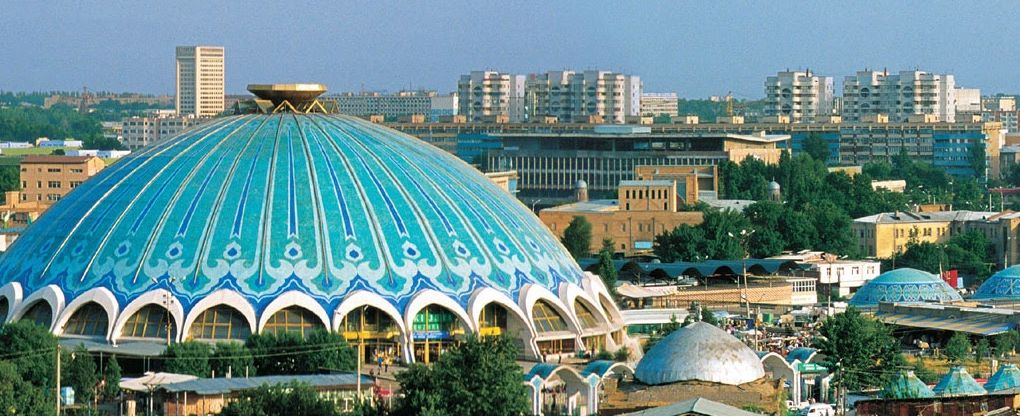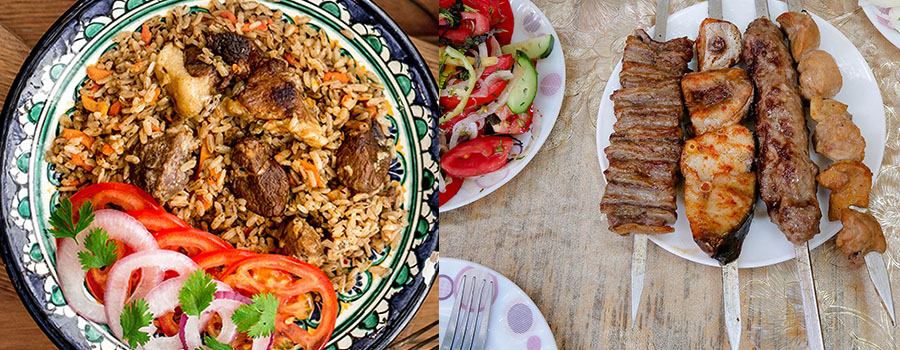General Information about Tashkent
Country name, international abbreviate: Uzbekistan, UZ, UZB
Settled: 5th to 3rd centuries BC
Type: City Administration
Area (calc. in 2018): 334.8 km2 (129.3 sq mi) and still growing
Population: 2,485,900
Time zone: UTC +5
Area code: 71
Average temperature/year: 21.6C

This glorious ancient city, which appeared on one of the crossroads of the Great Silk Road more than 2 thousand years ago, considered the same age as Rome. During its history, it changed many names - for example, the names Chach (Chach-tepa) and Shash (Shash-tepa), which came from the Sogdian language, meant “six hills”, Binkent translated from Turkic means “main city of the region”, as well as the name Madina-ash-Shash, which sounded in Turkic as Shashkent (Tashkent) - “stone city”. There is also a version according to which the name of Tashkent has Latin roots: from the words taxo - to feel, evaluate, determine the dignity of a thing (taxatio - assessment, tax) and centum - a hundred; a lot. Taxo, centum - taxcent (estimate, many) - tax center - Tashkent.
After the earthquake of 1966, which almost completely destroyed the central part of the city, Tashkent was restored in just 3.5 years. All the fraternal republics helped to reconstruct the capital; with their assistance, several new neighborhoods were built. In memory of what happened in Tashkent, the “Courage” memorial complex was installed.
Nowadays Tashkent is being under building urge – new living complexes appear as fast as mushrooms after the rain. The whole country is waiting for ‘Tashkent City’ complex developing process end, so we could come and see the oriental future itself – the heart and the head of Tashkent. But Shashtepa and Ming O'rik ancient objects of Uzbek heritage are under danger of breakdown. Fortunately, the government already knows about this situation and has announced a start of instauration process.

Tashkent’s cuisine is taken from different regions and cooked with our own spices mix. People of Tashkent love to eat like A LOT and with high amount of fat & kcals, even on summer.
Guests of ‘Anur Tour’ usually prefer to try out plov with beef and olive oil, finish it with a salad called ‘achiq-chuchuq’ (tomatoes & cucumbers with onion and literally nothing else), and after all that – norin (cut pasta with horse meat in a boullion) and samsa (who doesn’t know about samsa?)
So here, we list all the must-try dishes from Tashkent cuisine:
- Plov (wedding plov and choyxona plov)
- Shashlik
- Salads such as achiq-chuchuq & choban
- Norin
- Lagman
- Shurva or mashxurda
- Black tea with lemon (so-called ‘lemonchoy’)
Classic Uzbek breakfast contains fresh baked bread (so-called ‘non’), a small cup of kaymak (liquid sour cream), dried fruits such as peach, grape and apricot, and on top of that – samsa or homemade cheese. At summer, Uzbek people prefer to eat fruits & vegetables more than on winter period.
Most of Uzbek cuisine is heavy and requires a short rest after lunch.

Tashkent has a metro chain, and one of the directions is still in development. The city is known for having probably the most beautiful metro stations in the world. All of them are decorated with orient mosaic and colorful ornaments. Tashkent was the first city in Central Asia who built a metro during USSR times. Nowadays it also has a progressive bus & taxi transports, but no more trams and trolleybuses. They were removed due to the growing up amount of vehicles.
Tashkent has a chain of buses and minibuses; the average waiting time is 5-8 minutes, depending on the daytime.
In addition, as we mentioned above – the Tashkent’s metro is stunning and breathtaking. Even though the city is settled in kind of seismological area, it was built in accordance with modern technologies against earthquakes.
At 09.19.19, the government of Tashkent decided to announce one free entry day in Tashkent metro. It was tied to European flash mob called ‘1 week without car’.

Our company also rents out fine cars not older than 3 years. We offer local brand cars such as Chevrolet Cobalt, Chevrolet Lacetti and Chevrolet Malibu-3 and for group driving, we offer Mercedes mini-bus and big bus under brand Oriental.
Feel free to ask us about car rent when booking your tour! Your driver license is required along with a knowledge of local driving rules.
Speaking of other companies, we notice that many of them rent out Ravon 2 or 3, and mainly in white color. The price is by request and often calculated depending on your wish. Many of these rental cars are parked at international airport of Tashkent named after Islom Karimov.
The currency is Uzbek som and on 09.20.19 1 U.S. dollar costs 9411, 3 soms.
Local stores, cafes and restaurants accept cash in soms, but many of them also accept foreign cards in systems of Visa or MasterCard. Due to the financial revolution of Uzbekistan, you can cash out money from a card almost in any big bank branch with a small (0.5-1%) fee.

Not far from the current railway station ‘North’ you can see a unique historical monument - the ancient site of ancient settlement Mingurik. It was here that the ancient settlement of Chach was once located, from which the present Tashkent subsequently grew.
In the old part of the city, not far from the Chorsu bazaar, there is the largest madrasa of the city - Kukeldash Madrasa, built-in 1570 and being part of the architectural ensemble of the once main city square-region.
Not far from the Kukeldash Madrasa, there is one of the most ancient mosques in Tashkent - the Jami Mosque, also known as the Juma Mosque, which is more than 12 centuries old. Now the mosque is named after Khoja Ahrar Vali.
There, in the Old City, in the depths of one of the residential areas, there is the architectural complex Hazrati Imam (Khast-Imam), built near the grave of one of the first Tashkent imams - the scholar and poet Hazrati Imam, whose full name is Abu-Bakr Muhammad Kaffal Shashi. The complex, built in the 16th century, consists of the Barak Khan Madrasah, which houses the Muslim Office of Uzbekistan, Muyi Muborak Madras, Tilla-Sheikh Mosque, Hazrati Imam Mausoleum, Namazgoh Mosque, and the Imam Bukhari Islamic Institute.
Not far from Alisher Navoi Avenue, near the Urda Square is the architectural complex of Sheikhantaur, consisting of several mosques, mausoleums, a cemetery, and a madrasa. The complex got its name in honor of Sheikh Hovendi at-Tahur, whose tomb-mausoleum is the first building of the complex and dates from the XIV century.
In the suburbs of Tashkent, there is another historical monument - the Zangi-ota ensemble, built, according to legend, by order of Amir Temur himself at the end of the 14th century.

In the new part of the city - the one that was founded after the conquest of Tashkent in 1865 by the troops of the Russian Empire and separated from the Old City by the Anchor Channel - has its own attractions. Of course, they are much younger than those located in the Old Town, but this is no less interesting. One of the business cards of the capital is the Tashkent television tower with a height of 375 meters and an observation platform open to the public.
A true work of art is the Tashkent Metro, recognized as one of the most beautiful in the world. Its stations are skillfully decorated not only with marble and granite, but also with glass, plaster, and mosaic, and also decorated with frescoes, panels and bas-reliefs with oriental ornaments.
Another place to visit is Chorsu Market - the oldest bazaar of the capital, which is about 500 years old, located under a beautiful dome as if floating in the air. It is Chorsu, which is located in the Old Town on the former Eski-Zhuva Square, which is considered to be a heart of old Tashkent. Here there is a brisk trade in everything that should be in the oriental bazaar — fruits, sweets, nuts, spices, souvenirs, ceramics, and many other handicraft items.